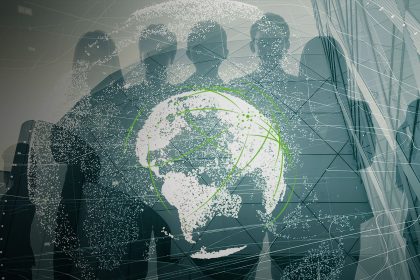Nowadays, it is inevitable to create an information infrastructure around any area of activity. Using AI, various industries can work more efficiently, receive all the relevant and necessary information, and comfortably communicate with consumers and other participants in the same field.
If you want to effectively manage any activity, understand what customers want or anticipate the actions of your competitors, you must constantly analyze large amounts of data and have a good source of information. The information infrastructure provides a solution to all these and many other problems, so today it is impossible to imagine the functioning of banking, financial, educational, marketing and other areas without it.
The Main Stages of Interaction with Consumers
Nowadays, information technology is so complicated and consists of so many elements that even a simple interaction with consumers here includes several stages. Here is a list of them:
- Consumer level, or consumer layer. This layer considers information received by clients, business customers, and website visitors. In other words, this is an information resource of a business that connects it with consumers, introduces them to offers, discounts, goods, prices, and so on;
- Functional level. Information providers in a particular area offer consumers data on what functions and opportunities they can use, what services are available to them, how to interact with them and what results to expect. To make this infrastructure work, people use any software, services, websites, applications and much more;
- Information level. Here, consumers themselves turn to suppliers of information products. It can be some valuable information for students or employees, courses, news, analytics, entertainment content and much more;
- The last layer is communication. It offers a very easy and continuous contact between consumers and companies that provide services for their mutual benefit using different channels of information.
Today, information infrastructures exist in almost all areas of activity, including small and medium-sized businesses, education, trading, medical services, and much more. In the current information society, it is AI that helps companies to fully operate, offer consumers products and services, receive feedback, and improve their offers. Today, businesses that do not have such an infrastructure are doomed to fail or work with minimal efficiency.

Interaction between information infrastructure and consumers
In the past, everything was very simple: people got their information from ordinary newspapers and radio. Sometimes they also heard rumors that might not be true. Later, a new powerful channel of interaction appeared, the TV. It is still doing its job well to this day, but it is lagging behind its powerful new competitor, the Internet.
There are many communication channels that help consumers interact with the information infrastructure, they include:
- Press;
- Analytical and informational articles;
- Radio broadcasts, advertising;
- Video advertising, TV;
- Movies and TV shows that often advertise all sorts of goods, especially premium ones;
- The Internet in all its aspects: social media, YouTube, user chats, online stores, various blogs, and so on.
Today, interaction with consumers takes place using the latest smartphones, conventional and smart TVs, computers, laptops, tablets, and even smart watches.
It is important to note that the interaction between information infrastructures and consumers is constantly changing and gaining new opportunities.





